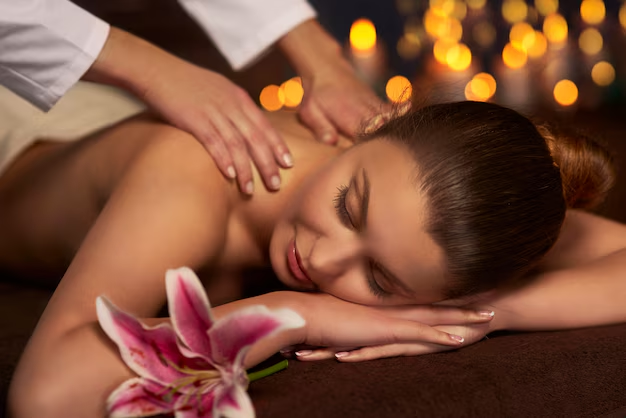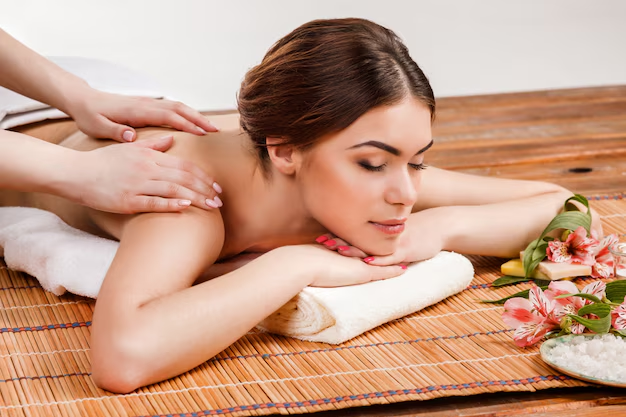
Massage therapy is a practice that brings relaxation and re-establishment of the body and mind. This article leads you through the various steps of a session, which will enlighten you on how the process promotes well-being and healing. Whether you have been to massage therapy or you would want to go further in it, with this guideline, you will appreciate its role in whole-person care.
What is the first step in a massage therapy session?
The first step in a massage therapy session is an initial consultation. This discussion allows the therapist to understand your health needs and goals, creating a personalized plan for wellness and healing.
The consultation normally includes inquiring about several issues: the general medical history of the patient, specific pain spots, and total wellness goals. This will, therefore lead the session to ensure that both physical as well as mental aspects are in the process.
This information will set guidelines for better techniques and pressure levels that are going to be used in the massage. It is the most vital step that places therapy in line with the whole-person care approach whereby your body as well as your mind are given attention and care.
How do you prepare for a massage therapy session?
To prepare for a massage therapy session, you need to undress to your comfort level in a private room and lie on the massage table under a sheet. This step ensures privacy, and relaxation, and creates the right atmosphere for effective wellness and healing.
After meeting him, you will be taken into a private room somewhat small. You can undress to your comfort level. You would then lie down on the massage table covered by a sheet or towel that hangs over your body. The therapist will leave the room to allow you to get comfortable. They will return when you are ready to begin the massage session.
Thus, this step is of particular importance for the achievement of a relaxing atmosphere and comfort in a setting where one can be able to relax and gain the maximum benefits from experience as laid out by whole-person care.

What happens during massage therapy?
During a massage therapy session, the therapist uses various techniques like kneading, stroking, and tapping to relieve muscle tension, improve circulation, and promote relaxation for overall wellness and healing.
Upon commencing the session, the therapist will apply various strokes including kneading and tapping on all areas of tension in the body, becoming lighter depending upon your discretion as you are assisted to relax and reduce stress while increasing oxygen and blood flow.
This hands-on practice has helped to give room for the removal of tension within the muscles, which further is a way of restoring the body and mind. The focus of the massage therapist on relaxation and comfort points to a more general and holistic approach to care for the entire person so that at the end of the session you are rejuvenated.
How do therapists ensure comfort during a massage therapy session?
To ensure comfort during a massage therapy session, the therapists ensure comfort by adjusting pressure, using proper draping, and maintaining a relaxing atmosphere. This promotes a positive experience focused on wellness and healing.
Your therapist will make inquiries concerning the pressure used during the massage to ensure that it meets your comfort level. Draping is utilized in order to maintain some form of privacy as well as retain warmth and only expose the area being worked on. The therapist might further adjust lighting, music, and temperature in the room in order to make a space where you will feel calm.
Comfort is of prime importance because you want to be as relaxed as possible for the session and it helps you feel more at peace. That focus on the extent to which physical comfort and a soothing atmosphere might combine to help facilitate a restorative experience is closely aligned with the principle of whole-person care.
How does a massage therapy session end?
A massage therapy session ends with a brief consultation to discuss the treatment’s effects and recommendations for future sessions. This supports ongoing wellness and healing.
Following the massage, your therapist will take some time to let you relax before returning to chat about your session. They can ask about your feelings, give you some self-care tips, and prescribe future sessions or treatments to maintain the results. The last session offers a chance for the therapist to assess your response to the treatment and give you advice adapted to your situation for aftercare.
This contributes to keeping those positive effects of massage therapy and encourages you to focus more on long-term health. The therapist reconfirms their role in supporting your overall health and alignment with whole-person care by providing information on future care.

How does massage therapy fit into a holistic lifestyle?
Massage therapy fits into a holistic lifestyle by promoting physical and mental relaxation, which are key components of wellness and healing.
Massage therapy is an integral practice for anyone hoping to live a balanced and holistic lifestyle. It reduces stress, stretches out muscle tension, and generally clarifies the mind, bringing well-being. Many people then start weaving in massage therapy sessions into their other holistic practices-like meditation and yoga or acupuncture-to help them take better care of themselves in the long term.
This is part of what’s behind the holistic approach to whole-person care: its encouragement of both physical and emotional healing and harmony in day-to-day life. For one who is interested in mindfulness and holistic living, massage therapy may become a significant tool on the road to overall balance.
What are the benefits of regular massage therapy sessions?
Regular massage therapy sessions can improve flexibility, reduce stress, and enhance mental clarity, contributing to ongoing wellness and healing.
Constant massage keeps the muscles flexible, clears away tension, and encourages blood circulation. Mood-wise, it has a benefit to patients because, in them, the stress can be decreased, and there is always a relaxation that results because regular sessions may contribute to prolonged improvements in general physical and emotional well-being.
In fact, the effects are cumulative; they support long-term wellness and healing. For those who include massage in their lifestyle, therefore benefits extend beyond the session. This is applied in order to focus on different aspects involved in whole-person care which helps balance and clarity of body and mind.
In Conclusion
A massage therapy session provides more concentration on wellness and healing. It really gives relief not only in the body but also in the mind. Knowing the steps will thus help you to better understand whole-person care and will achieve all the benefits of making it an important part of your holistic lifestyle.

